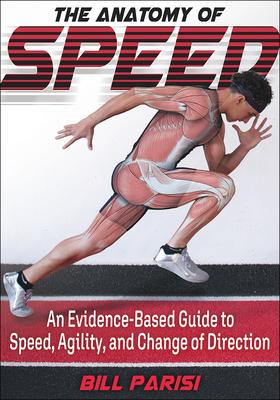- Acceleration
- Maximum velocity
- Deceleration
- Change of direction
- Agility
- Maneuverability
- Speed-specific strength
The Anatomy of Speed converts the science into practical application, allowing you to select the most effective drills and exercises, and tailor a training program unique to your athlete's needs. The exercises--which are each designated as basic, moderate, or advanced--are organized by complexity and speed-related categories. Exercises aimed at improving range of motion and priming the nervous system set the stage for optimal results. Speed-specific strength exercises use equipment like free weights, medicine balls, and sleds to target important speed and change-of-direction qualities. A practical programming chapter helps you assemble it all into individualized training based on sport, position, body type, skill level, movement preference, and training history. Speed comes in many forms. It is a physical skill that can be developed and improved with targeted training and a solid understanding of mechanics. The Anatomy of Speed offers equal parts science, art, and practical application to do just that.
